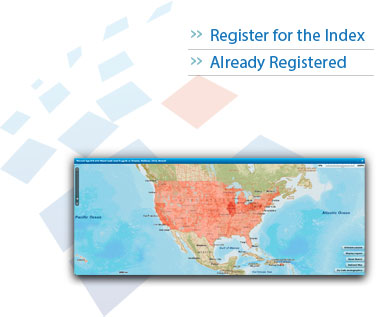



About the Lead Risk Index
The National Minority Quality Forum has launched the Lead Risk Index to help health-care practitioners, policymakers, advocacy groups and industry gain a full understanding of childhood lead poisoning at the local level.
This internet-based resource enables users to map the estimated prevalence of elevated blood levels, total counts and average blood lead levels in children under age six at the zip-code level nationally as well as within individual states, counties, metropolitan statistical areas (MSAs) and federal and state legislative districts. In addition to mapping these parameters for the total population of children under age six (overall), the index also maps them by gender and race/ethnicity. The Index also provides users the opportunity to map the percentage of housing built prior to 1980 (when lead paint was finally banned) as well as the estimated number of children under age six living in pre-1980 housing in any geography down to the zip code level. Index users can generate color-coded maps and charts of the estimated prevalence of the elevated blood lead levels, total counts and average blood lead levels in children under age six, as well as this housing information, for downloading, printing, and dissemination to support educational and advocacy initiatives.
According to Gary Puckrein, PhD, President and CEO of the National Minority Quality Forum and developer of the Index: “Because it is difficult to get a true picture of the lead issue at a local level, our approach combines an intuitive user interface with currently available data from National Health and Nutrition Examination Survey (NHANES), the Centers for Disease Control and Prevention (CDC), and state agencies, to provide the granularity needed for communities to take preventive action."



a founding subscriber to the Lead Risk Index.